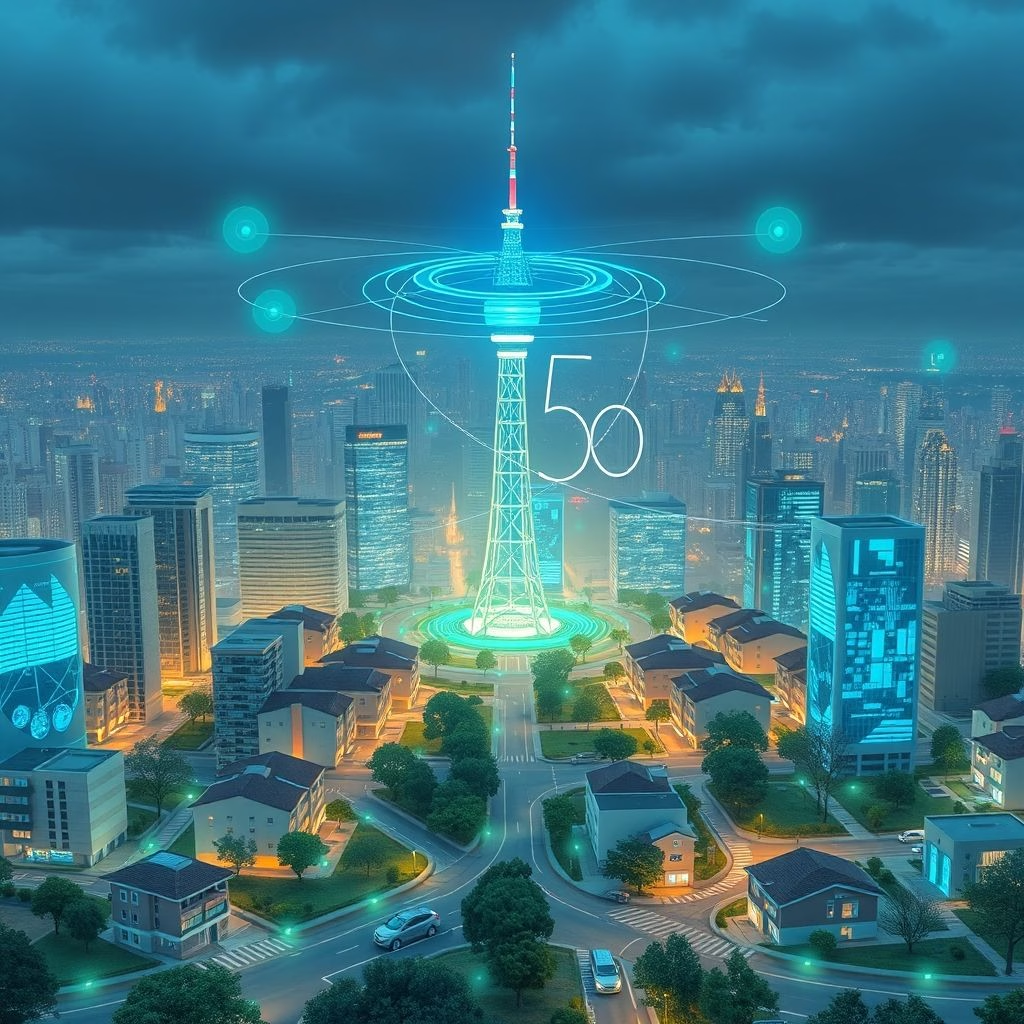5G: The Future of Connectivity is Here (But Not Without Challenges)

5G: The Next Generation of Wireless Technology
The world of mobile communication is constantly evolving. From the clunky brick phones of the past to the sleek smartphones we carry today, each generation has brought significant advancements. Now, the spotlight is on 5G, the fifth generation of cellular network technology, promising to revolutionize how we connect and interact with the world around us.
What Makes 5G Special?
5G offers a considerable leap forward compared to its predecessor, 4G. Its primary advantages lie in two key areas: speed and latency. Download speeds can reach up to a staggering 10 Gbit/s, making downloading movies, streaming high-definition video, and playing online games a near-instantaneous experience. Perhaps even more importantly, 5G boasts significantly lower latency. This means reduced lag, or delays, in communication. This is critical for real-time applications such as remote surgery and autonomous vehicles.
5G NR: The Unified Standard
At the heart of 5G is a global unified standard known as 5G New Radio (5G NR). This standard was developed by the 3rd Generation Partnership Project (3GPP), an organization that brings together various telecommunications standards bodies. Having a unified standard is crucial for seamless global connectivity, allowing devices to work across different networks and countries.
Understanding 5G Frequency Bands
5G networks operate across three primary frequency bands: low, mid, and high. Each band has its own characteristics that impact performance and coverage:
- Low-band 5G offers the broadest coverage, similar to 4G, but with only slightly improved speeds.
- Mid-band 5G provides a good balance between speed and coverage, offering faster download speeds than low-band.
- High-band 5G, also known as millimeter wave (mmWave), delivers the fastest speeds. However, its shorter range requires a denser network of cell towers.
Applications of 5G: Transforming Industries
The increased bandwidth and reduced latency of 5G unlock a plethora of new possibilities across various industries:
- Internet of Things (IoT): 5G can connect a massive number of devices, from smart home appliances to industrial sensors.
- Autonomous Vehicles: Low latency is crucial for self-driving cars to react in real time.
- Extended Reality (XR): 5G enables immersive experiences in augmented and virtual reality.
- Healthcare: Remote surgery and telemedicine can improve access to healthcare.
The Road Ahead: Challenges and Considerations
While 5G offers immense potential, its deployment is not without challenges. Significant investments are required to build the necessary infrastructure, including new cell towers and network upgrades. Spectrum allocation, or the assignment of specific radio frequencies to carriers, is also a complex process, often leading to debates between stakeholders. Furthermore, security concerns surrounding 5G networks require careful attention, and there are also environmental considerations related to energy consumption and waste management.
In conclusion, 5G is poised to reshape our digital landscape. While challenges remain, the benefits of faster speeds, lower latency, and enhanced connectivity are undeniable. As 5G networks continue to expand and evolve, we can expect to see even more innovative applications emerge, further transforming how we live, work, and interact with the world.



